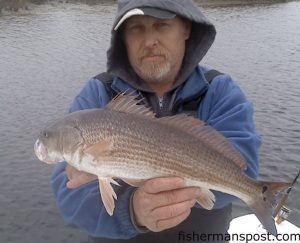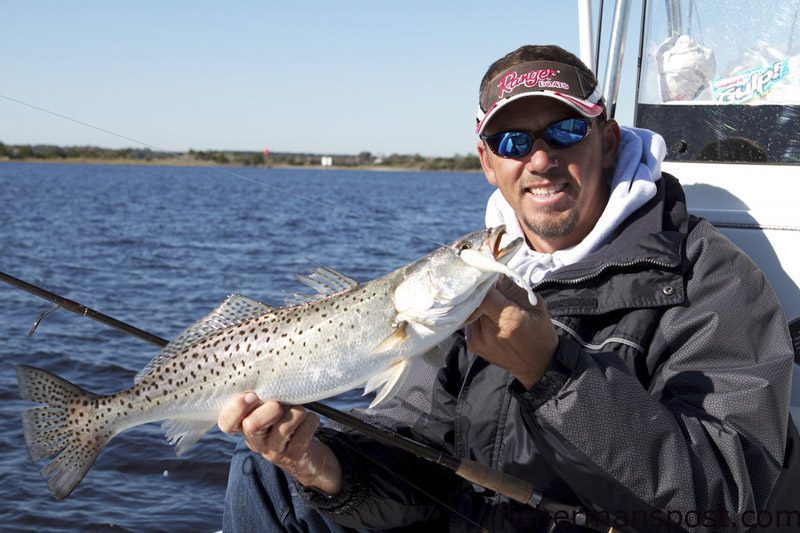Swansboro March 10, 2011

Ronnnie Starling with a slot red drum he hooked in Bear Creek on a Gulp 4" Baitfish while fishing with Capt. Chris Sewell of Fishead Charters.
Rob, of Sandbar Safari Charters, reports that red drum are producing the lion’s share of the inshore action in the area right now. Anglers looking for the reds should target the higher salinity bays and soft mud flats closer to the inlets for the best odds of locating feeding fish right now. Gulp baits on extremely light jigheads and live mud minnows are the most effective baits for the early-season reds.
There are some schools of reds feeding in the surf zone near the area inlets as well, and anglers can also target those fish with Gulp baits, using slightly heavier jigheads for casting distance and to get the lures down in the breakers.
Some speckled trout are coming out of the mainland creeks and the rivers, though anglers can’t take any home until the trout season re-opens in June. The trout fishing gets better after a few days without rain, as the water clears up in the creeks and rivers, and anglers are also likely to find a few black drum, smaller reds, and some flounder in the mix with the specks. All will respond to Gulp baits and other soft plastics.
Jeff, of FishN4Life Charters, reports that winter finally seems to have broken and the area’s inshore fish are becoming more active by the week. The inshore red drum fishery was excellent on the warmer days throughout the winter and is only getting better, as the water temperatures are holding steady between 55 and 60 degrees.
The reds are scouring the shallows in the area for food, and anglers should focus on the shallow creeks, mud flats, and oyster beds when looking for the early spring reds. The fish are a little spooky in the shallow water, so a trolling motor is an essential tool to prospect for them. Scented soft plastic baits are the best bets for the reds right now, and fishing them on weightless work hooks or very light jigheads is the way to go.
Off the beaches, false albacore will be providing some of the most exciting early season action. They generally arrive at the nearshore wrecks and live bottoms and the inlet tidelines in mid-March. Bird activity, like small terns hovering over the water’s surface, will key anglers in to the presence of the albacore, and the early morning and late afternoon hours are generally the best times to find them feeding on the surface. Soft plastics like Trout Killers on 1/4 to 1/2 oz. jigheads and 3-4” topwater plugs are excellent baits for the schooling fish. When they’re feeding on smaller baitfish, double spec rigs and small 2-3” metal jigs will draw them to bite.

Capt. Jeff Cronk, of Fish'N4Life Charters, with a 4 lb. speckled trout he hooked on a Gulp pogy in the backwaters near Swansboro.
Rich, of The Reel Outdoors, reports that inshore anglers are finding some action with red drum in the area’s backwaters, mostly while casting Gulp baits and other scented soft plastics.
Anglers are also connecting with some speckled trout, although they must be released until the season re-opens in June. Gulps and live mud minnows will produce the most action with the specks.
Offshore, anglers making the run to the Gulf Stream will likely find some action with wahoo and blackfin tuna this month. Trolling skirted ballyhoo and other lures will attract the most attention.
